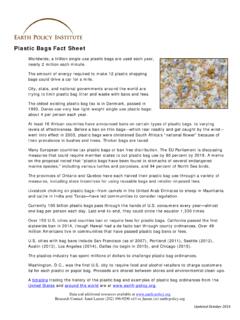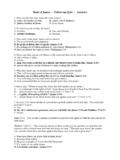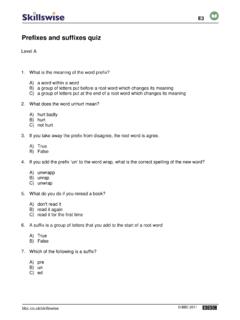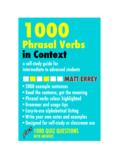Transcription of Plan B 4 - Earth Policy Institute – Building a ...
1 Lester Brown tells us how to build a more just world and save the plan -et .. in a practical, straightforward way. We should all heed his advice. President Bill Clinton .. a far-reaching thinker. News & World Report It s exciting .. a masterpiece! Ted Turner [Brown s] ability to make a complicated subject accessible to the generalreader is remarkable.. Katherine Salant, Washington Post If the 2007 Nobel Peace Prize had been extended to a third recipient, thelogical candidate would have been Lester Brown. Edward O. Wilson Brown is impassioned and convincing when talking about the world sills and what he considers the four great goals to restoring civilization April Streeter, In this impressively researched manifesto for change, Brown bluntlysets out the challenges and offers an achievable road map for solving theclimate change crisis. The Guardian In tackling a host ofpressing issues in a single book, plan B foran eye-opening read.
2 Times Higher Education Supplement The best big-picture summary of our environmental situation both theproblems and the solutions I ve ever read. Grist A great book which should wake up humankind! Klaus Schwab, World Economic Forum Lester R. Brown, one of the world s preeminent eco-economists .. has asolution for dealing with the threat.. Plans must be periodically revisedand refined, which Brown has done with insight and foresight in this vol-ume. Ode Praise for plan Bcontinued .. a highly readable and authoritative account of the problems we facefrom global warming to shrinking water resources, fisheries, forests, picture is very frightening. But the book also provides a way forward. Clare Short, British Member of Parliament Lester R. Brown gives concise, but very informative, summaries of whathe regards as the key issues facing civilization as a consequence of thestress we put on our environment.
3 A valuable contribution to the ongo-ing debate. The Ecologist An enormous achievement a comprehensive guide to what s goingwrong with Earth s life support system and how to fix it. Grinning Planet plan B has three parts: restructuring the global economy, working to erad-icate poverty and reversing environmental destruction. Tall orders, to besure: but plan B is here thoughtfully laid out to achieve the seeming impos-sible and with an understanding of world trends and cultures too. The Midwest Book Review Lester R. Brown .. offers an attractive 21st-century alternative to theunacceptable business-as-usual path that we have been following withregard to the environment ( plan A), which is leading us to economicdecline and collapse. Thomas F. Malone, American Scientist Brown s overall action plan is both comprehensive and compelling. Caroline Lucas,Resurgence A great book about ways to improve the environment and sustaineconomic progress.
4 St. Petersburg Times plan B is a great wealth of information on the environment unequaledin any other source ofwhich I am aware. Walter Youngquist, author ofGeoDestinies Beautifully written and unimpeachably well-informed. Ross Gelbspan, author ofThe Heat Is On The best single volume on saving the Earth , period. Geoffrey Holland, author ofThe Hydrogen AgePLANB BROWNPlan B : Mobilizing to Save CivilizationPlan B : Rescuing a PlanetUnder Stress and a Civilization in TroubleOutgrowing the Earth : The Food Security Challenge in an Age of Falling Water Tables and Rising TemperaturesPlan B: Rescuing a PlanetUnder Stress and a Civilization in TroubleTheEarth Policy Readerwith Janet Larsen andBernie Fischlowitz-RobertsEco-Economy: Building an Economy for the EarthState of the World 1984through2001 annual, with othersVital Signs 1992 through2001annual, with othersBeyond Malthuswith Gary Gardnerand Brian HalweilThe World Watch Reader 1998editor with Ed AyresTough ChoicesWho Will Feed China?
5 Full Housewith Hal KaneSaving the Planetwith Christopher Flavinand Sandra PostelBuilding a Sustainable SocietyRunning on Emptywith Colin Normanand Christopher FlavinThe Twenty-Ninth DayIn the Human InterestEarth Policy Institute is a nonprofit environmental research organizationproviding a plan for Building a sustainable future. In addition to the plan Bseries, the Institute issues four-page plan B Updatesthat assess progress inimplementing plan B. All ofthese plus additional data and graphs can bedownloaded at no charge from the EPI Web site: to Save CivilizationEARTH Policy INSTITUTENEW YORK LONDONW W NORTON & COMPANYL ester R. BrownPrefacexi1. Selling Our Future3 Food: The Weak Link4 The Emerging Politics of Food Scarcity9 Our Global Ponzi Economy14 Mounting Stresses, Failing States18 plan B A plan to Save Civilization23I. THE CHALLENGES2. Population Pressure: Land and Water31 Civilization s Foundation Eroding32 Water Tables Falling38 Farmers Losing Water to Cities41 Land and Water Conflicts44 Cars and People Compete for Grain48 The Rising Tide of Environmental Refugees513.
6 Climate Change and the Energy Transition 55 Rising Temperature and Its Effects56 Melting Ice, Rising Seas61 Melting Glaciers, Shrinking Harvests66 Rising Temperatures, Falling Yields69 The Decline ofOil and Coal71 AChallenge Without Precedent75II. THE RESPONSE4. Stabilizing Climate: An Energy Efficiency Revolution79 ARevolution in Lighting Technology81 Energy-Efficient Appliances84 Zero-Carbon Buildings87 Copyright 2009 by Earth Policy InstituteAll rights reservedPrinted in the United States ofAmericaFirst EditionThe EARTHPOLICYINSTITUTE trademark is registered in the Patent and Trademark views expressed are those of the author and do not necessarily represent thoseof the Earth Policy Institute ; of its directors, officers, or staff; or of any text of this book is composed in Sabon. Composition by Elizabeth Doherty;manufacturing by Courier 978-0-393-07103-0 (cloth) 978-0-393-33719-8 (pbk)W. W. Norton & Company, Inc.
7 , 500 Fifth Avenue, NewYork, W. Norton & Company, Ltd., Castle House, 75/76 Wells Street, London W1T 3QT1 2 3 4 5 6 7 8 9 0 This book is printed on recycled Localization of Agriculture230 Strategic Reductions in Demand233 Action on Many Fronts236 III. THE GREAT MOBILIZATION10. Can We Mobilize Fast Enough?241 Shifting Taxes and Subsidies 244 Coal: The Beginning of the End 249 Stabilizing Climate253 Three Models of Social Change256 AWartime Mobilization259 Mobilizing to Save Civilization261 What You and I Can Do266 Notes269 Index341 Acknowledgments363 About the Author369viiiContentsElectrifying the Transport System91 ANew Materials Economy96 Smarter Grids, Appliances, and Consumers103 The Energy Savings Potential1065. Stabilizing Climate: Shifting to Renewable Energy109 Turning to the Wind113 Solar Cells and Thermal Collectors117 Energy from the Earth125 Plant-Based Sources of Energy128 Hydropower: Rivers, Tides, and Waves132 The World Energy Economy of 20201356.
8 Designing Cities for People143 The Ecology of Cities145 Redesigning Urban Transport 147 The Return of Bicycles151 Reducing Urban Water Use154 Farming in the City158 Upgrading Squatter Settlements160 Cities for People 1627. Eradicating Poverty and Stabilizing Population168 Educating Everyone171 Toward a Healthy Future174 Stabilizing Population181 Rescuing Failing States185 APoverty Eradication Agenda and the Earth192 Protecting and Restoring Forests193 Planting Trees to Sequester Carbon198 Conserving and Rebuilding Soils202 Regenerating Fisheries206 Protecting Plant and Animal Diversity209 The Earth Restoration Budget2119. Feeding Eight Billion People Well216 Raising Land Productivity217 Raising Water Productivity222 Producing Protein More Efficiently226 Several months ago I was reading an article in Newsweekon cli-mate and energy when a line jumped offthe page: Business asusual has started to read like the end of the world.
9 Although this conclusion may surprise many, it will not sur-prise the scientists who track global environmental trends suchas deforestation, soil erosion, falling water tables, and risingtemperature. For some time they have been saying that if thesetrends continue we will be in trouble. What was not clear waswhat form the trouble would take. It looks now as though food is the weak link, just as it wasfor many earlier civilizations. We are entering a new food era,one marked by higher food prices, rapidly growing numbers ofhungry people, and an intensifying competition for land andwater resources that has now crossed national boundaries asfood-importing countries try to buy or lease vast tracts oflandin other earlier grain price hikes that were caused by singularevents a drought in the Soviet Union or a monsoon failure inIndia and were typically remedied by the next harvest, thisrecent rise is trend-driven.
10 Among the trends responsible arepopulation growth, falling water tables, rising temperature, icemelting, and the use of grain to produce fuel for cars. In decades past, when grain prices climbed, the Depart-ment ofAgriculture simply returned some cropland idled underfarm programs to production, but now that land is all in , food security has become a highly complex Policy may affect future food security more than agri-cultural Policy . Eradicating hunger may depend more on thesuccess of family planners than that of farmers. Raising waterproductivity may contribute more to future food security thanexpanding the irrigation water supply would. In his book The Collapse of Complex Societies, JosephTainter observes that civilizations become progressively morecomplex as they evolve until eventually they cannot manage thecomplexity. I was reminded of this as I watched Congresswrestling with the climate bill, whittling away at its goals as thisbook was going to institutions are also wrestling with writing, all eyes are on the upcoming Copenhagen cli-mate conference in early December.









